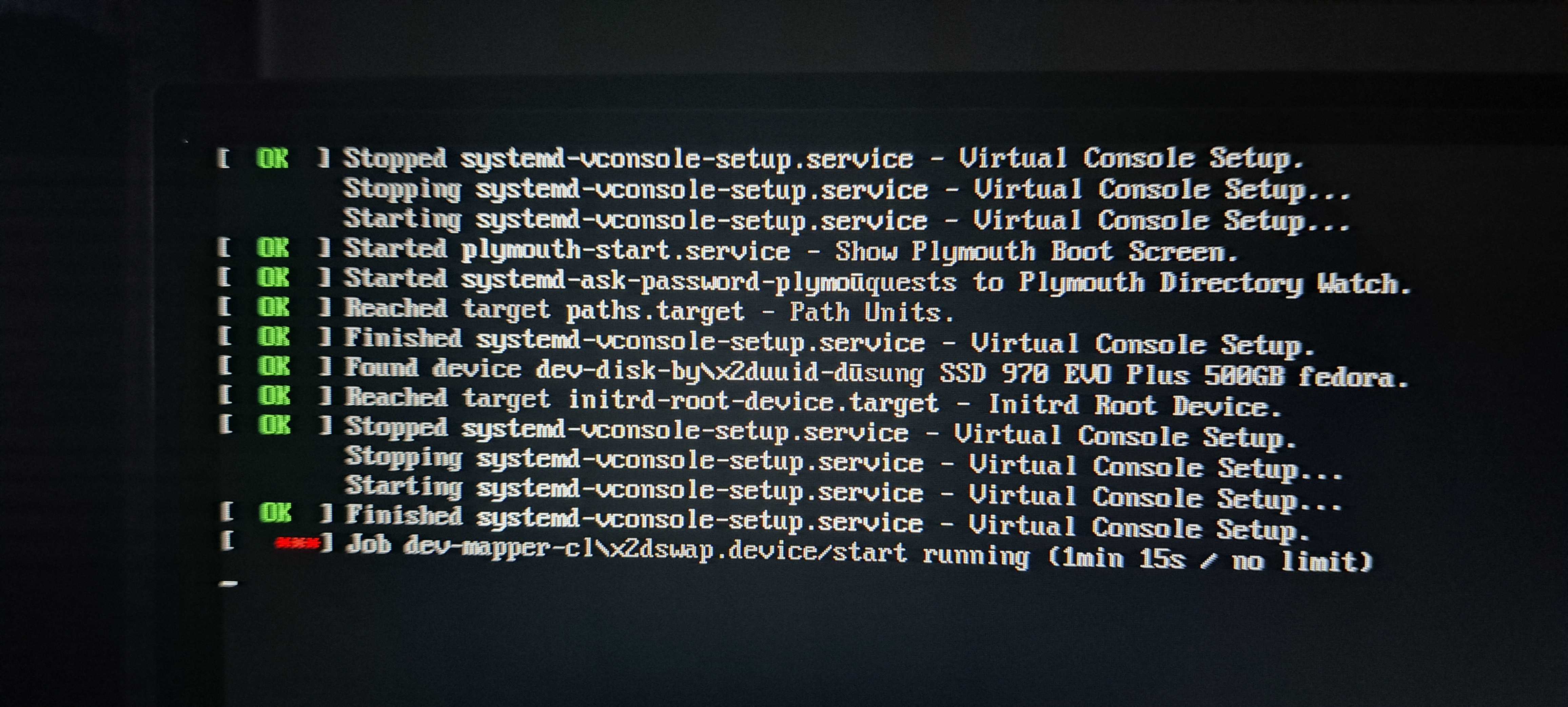My Fedora 40 system won't boot with any kernel over 6.8.10.
I've had this problem for about a month now and have been putting it off, as I haven't really been using my computer recently, but it needs to be addressed.
I'm running a Fedora 40 KDE 6 distro, which was upgraded from Fedora 39. It's been working pretty well for the half year I've been using it but recently I've encountered an issue. About a month ago, after upgrading my system to kernel 6.8.10, my system started to hang while in boot.
usb 1-10 device descriptor read/64, error -71 [ OK ] Started plymouth-start.service - Show Plymouth Boot Screen [ OK ] Started systemd-ask-password-plymoūquests to Plymouth Directory Watch [ OK ] Reached target paths.target - Path Units. [ OK ] Found device dev-disk-by\x2duuid-dūsung SSD 970 EVO Plus 500GB fedora. [ OK ] Reached target initrd-root-device.target - Initrd Root Device. [ *** ] Job dev-mapper-cl\x2dswap.device/start running (xxs / no limit)
Fortunately Fedora saves the previous 2 kernels versions and I was able to boot into my computer using Kernel 6.8.9. When I went to check what was wrong I noticed that with kernel 6.8.10 it always hangs at this part of the boot process.
[ *** ] Job dev-mapper-cl\x2dswap.device/start running (xxs / no limit)
I understood that this has something to do with swap but I'm unsure what the issue is exactly. My Fedora install doesn't have a swap partition, it uses zram. I'm unsure if that's an issue.
I've reinstalled kernel 6.8.10 and it didn't fix the issue. I've also upgraded my machine to use kernel 6.8.11 and see if that would fix anything, but it did nothing, and upgrading to 6.8.12 probably won't fix anything either. I've installed a dnf plugin called versionlock meant to pin certain kernels as to not delete them and have already pinned kernel 6.8.9, but I'd still rather avoid upgrading.
What I really don't understand is what changed. Why does my system boot successfully in kernel 6.8.9 but fails in 6.8.10. I've read that others have had a similar experience with the 6.8.10 kernel on fedora, albeit for different reasons.
If someone can point me to the answers that would be great, but an explanation as to how to read that log and steps I could take to identify and troubleshoot would be just as welcomed.
UPDATE: In my /proc/cmdline I had an argument known called resume=/dev/mapper/cl-swap which was trying to find a swap partition that didn't exist.
I used the command cat /proc/cmdline to view my boot arguments and then ran the command sudo grubby --remove-args=<resume=UUID=xxx> --update-kernel=ALL where <resume=UUID=xxx was replaced with resume=/dev/mapper/cl-swap.
Thank you Domi@lemmy.secnd.me for linking the thread.

Hey I found my solution here https://discussion.fedoraproject.org/t/solved-boot-hang-job-dev-disk-by-x2uuid-no-limit/119111
hope this helps.